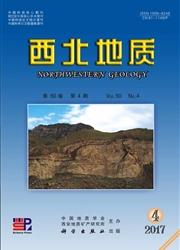

 中文摘要:
中文摘要:
位于青海省拉脊山南邻的化隆地区,发育多个规模相对较小的基性一超基性岩杂岩体,亦是南祁连山一条非常重要的成矿岩带,其内产出与该类岩体密切相关的裕龙沟、拉水峡、亚曲等中小型岩浆铜镍矿床。通过化隆地区小型侵入体的地质特征及地球化学综合研究,联系已有研究成果及其相关其他地质信息,发现化隆地区含铜镍矿岩体属铁质系列的基性一超基性杂岩体,表现为Nb、Ta、Ti的亏损,所有岩石均属于钙碱性系列。且轻稀土(LREE)和大离子亲石元素(LILE)相对富集,适度亏损高场强元素。矿石同位素研究揭示其原始岩浆在经历结晶分异后,又遭受了地壳混染作用,以及富Si地壳物质的加入,产生硫化物的熔离作用而成矿。结合区域构造演化过程与成矿认识,认为南祁连化隆地区的成岩成矿可能与形成时的俯冲相关的地质环境密切相关。
 英文摘要:
英文摘要:
Hualong, is located in the South Lajishan, has developed many small basic-ultrabasie intru- sions, simultaneously, is a great important Ni-Cu metallogenic belt in South Qilian mountains, and formed Yulonggou, Lashuixia, Yaqu small scale magmatic Ni-Cu sulfide deposits that relationed closely with these small intrusions. It found that the small intrusions belong to iron series basic-ultrabasic complex in Hualong by the study on geological and geochemical characteristics, expressed as the intrusions with Cu-Ni sulpides develop an iron-enrichment trend, rare earth elements exhibit a LREE enrichment charac- teristics, and shows egative Eu anomalies The enrichment in large ion lithophile elements (LILE), de- pleteion in high field strength elements (HFSE) and the appearance of a negative Nb-Ta anomally indicate a chemical affinity to cal-alkaline rocks. Ore isotope study revealed that the Ni-Cu deposits had formed from crystallization and differentiation of the original magma, suffered from crustal contamination, and the participation of Si-rich material. Together with regional tectonic evolution and mineralization recogniza- tion, it suggests that the formation of rock and ore in Hualong were related closely to geological environ- ment on subduction.
 同期刊论文项目
同期刊论文项目
 同项目期刊论文
同项目期刊论文
 Sulfide mineralization associated with arc magmatism in the Qilian Block, western China: zircon U-Pb
Sulfide mineralization associated with arc magmatism in the Qilian Block, western China: zircon U-Pb 期刊信息
期刊信息
